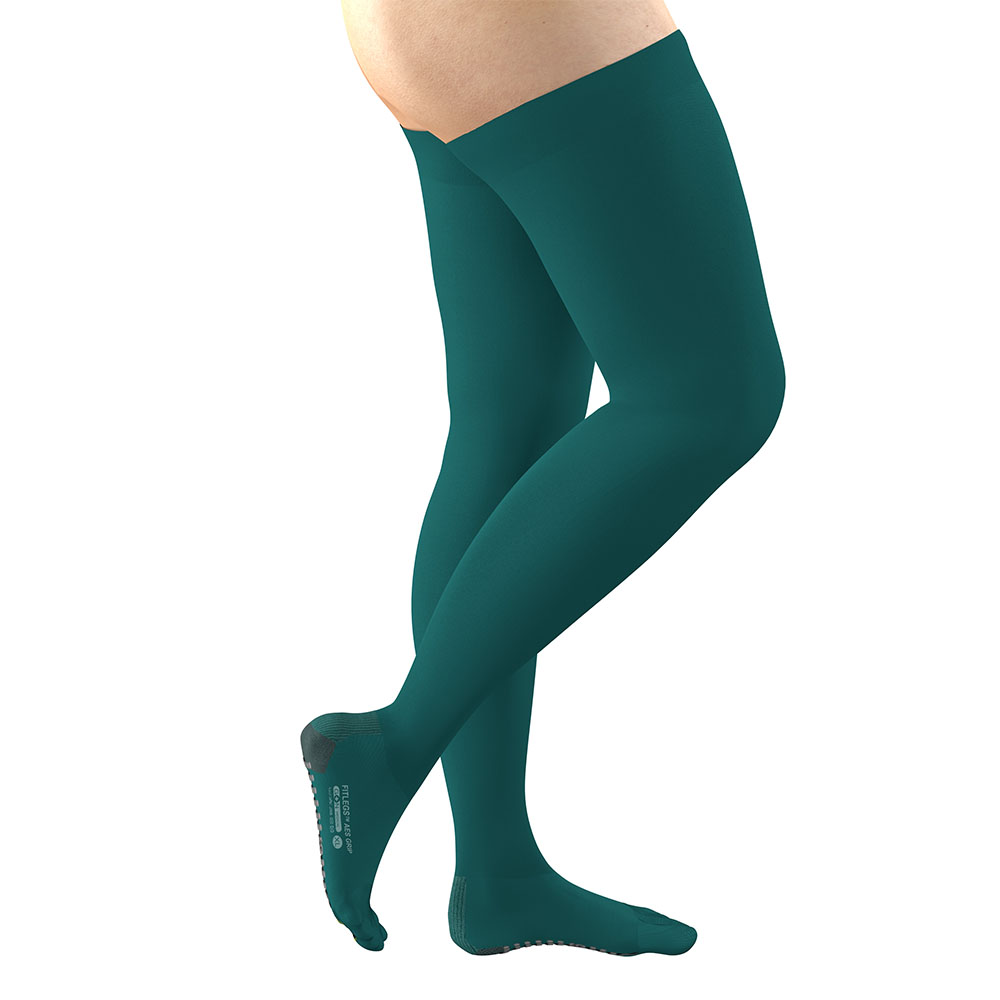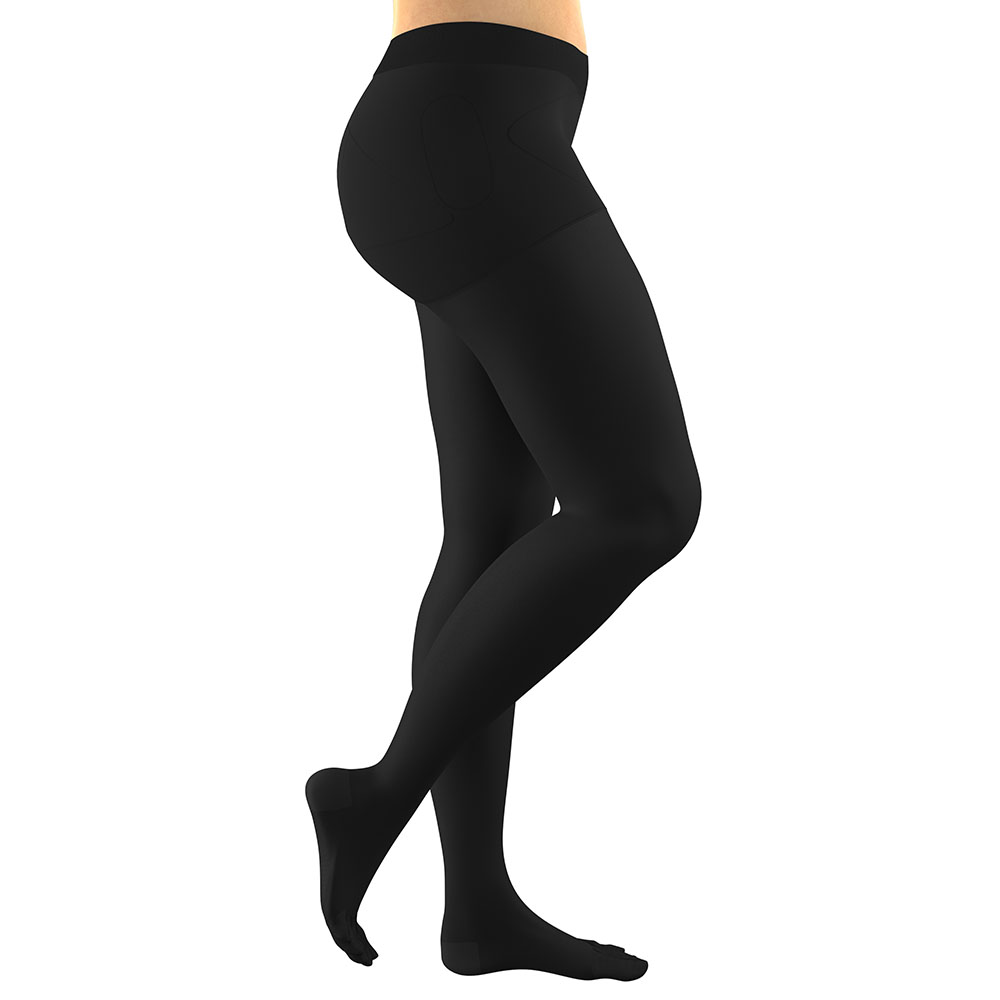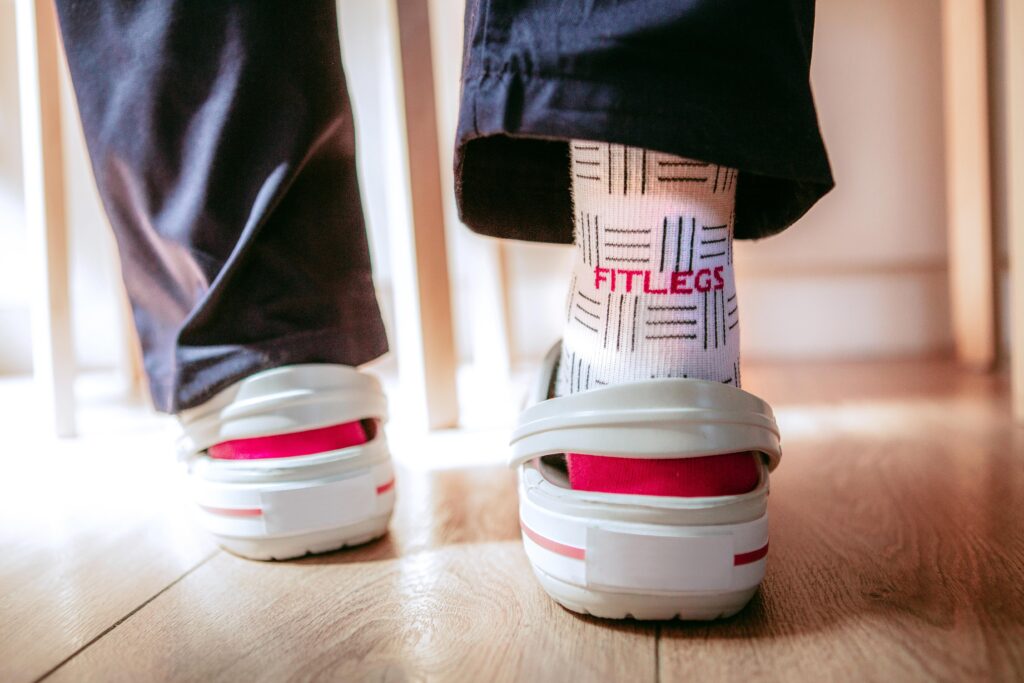Suppose you have a long-term condition, reduced mobility or are recovering from an injury or surgery. In that case, medical-grade compression socks and compression stockings can form a useful part of your recovery. Much like sitting in a cramped plane or at a desk all day, those who are bed-bound or struggle for movement can suffer from poor circulation. This can increase the chances of developing conditions such as DVT or varicose veins, leading to aches and pains and delaying your recovery.
This guide outlines some of the key features of medical-grade compression socks and stockings, such as the FITLEGs AES range, and how they might help you.
What are medical compression socks and stockings?
Medical compression socks and stockings are much like those worn every day by nurses, frequent flyers and those with active, but with additional compression to help prevent and manage a wide range of conditions.
Sometimes known as Anti-Embolism Socks or Stockings (AES), they help to improve circulation and prevent conditions such as deep vein thrombosis (DVT), varicose veins, swelling and general aches and pains. The improved circulation may also speed up recovery from injury or surgery, helping deliver nutrient-rich, oxygenated blood to the lower legs.
FITLEGs AES Medical compression socks have compression ratings between 18mmHg and 32mmHg and are available in a wide range of colours, sizes and lengths. It’s essential to discuss your requirements with your doctor or care practitioner before wearing them.
What types of medical compression socks are there?
Typically, they are available as socks which finish just below the knee, stockings that go to mid-thigh, or occasionally as a pair of leggings. There are also variations around the foot, depending on the patient’s condition and needs. For example, some medical compression socks and stockings do not have a foot section at all to cater to those who may be recovering from injury, others may have just an open-toe section.



For the elderly, those with reduced mobility, or who may be at risk of falling and causing further injury, FITLEGS AES Grip socks have silicone pads placed across the sole. These increase the wearer’s confidence and help reduce slips, trips, and falls in the home or hospital.
Who should wear medical compression socks?
Medical compression socks should be worn when directed to by a medical professional, but they’re often worn by people who suffer from long-term conditions or are in hospital for an injury or operation.
They’re especially useful during the recovery phase when movement is limited and there’s an increased risk of swelling, DVT, varicose veins, chronic venous insufficiency (CVI) and general aches and pains.
How are medical compression socks different from regular ones?
Besides the compression level, there are some other key differences between medical compression socks and those designed to be worn every day or for sport. Medical compression socks often contain less elastane which makes them easier to put on and take off, and more comfortable to wear for long periods. Medical compression socks and stockings may also forego certain materials such as latex or other potential allergens.
How long should you wear medical compression socks in hospital?
There is no right or wrong answer as it will depend on your condition and the recommendations of your doctor. Typically, it’s not recommended to wear medical compression socks around the clock, and you may be advised to take them off at night to give the skin a rest from the pressure.
Who shouldn’t wear medical compression garments?
Medical compression socks are generally safe but there are some cases where they might not be suitable. For example, people with severe arterial disease should not wear them because blood flow is already compromised, and compression socks could restrict blood flow further. Likewise, people with heart conditions or high blood pressure may also not be able to safely wear them.
Lastly, those with open wounds or infections should proceed with caution. The material can sometimes irritate or delay the healing of open wounds or infections on the legs.
Where else can you wear medical compression socks?
Your doctor will advise you on whether you need to keep wearing the socks, and for how long, after you’ve left hospital and have returned home. It may be the case that you wear them sometimes and home or switch to a pair with reduced compression.
Medical compression socks are also sometimes worn in rehab facilities, care homes and other medical sites. You may also be directed to wear them at home or even if you have returned to work, depending on the situation.
Medical compression socks can form a vital part of your recovery from injury, surgery or illness, whether part of a stay in hospital or not. It’s important to discuss your requirements with your doctor to ensure that it’s safe to do so, but you can buy FITLEGs AES Medical Compression Socks in our online store.
